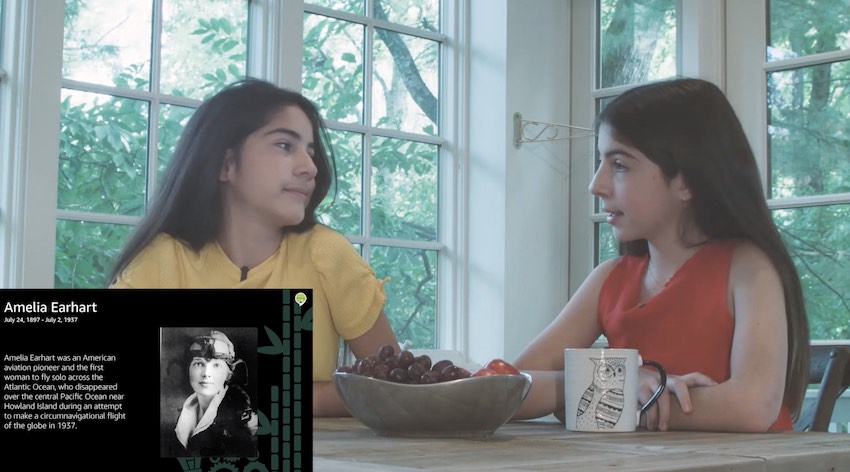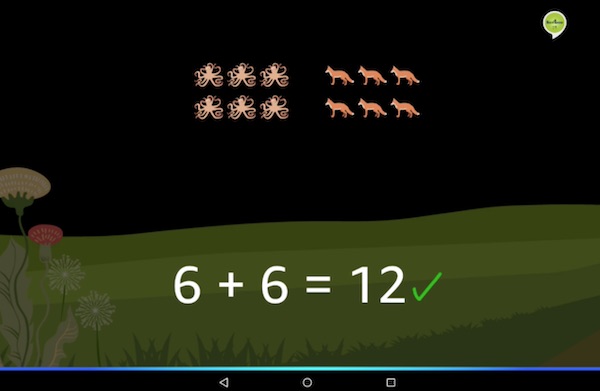Bamboo Learning Closes $1.4 Million in Funding, Wins More Awards, and Launches a New Product

Bamboo Learning announced in December that it had closed a $1.4 million seed funding round which included participation by Alexa Fund, Wavemaker Partners, Unlock Venture Partners, VoicePunch, and several individuals from leading tech companies. At the same time, the company introduced a new Alexa skill called Bamboo Luminaries which an announcement summarizes as, “Bamboo Luminaries lets Alexa device owners and their families in more than 80 countries learn about a diverse set of historical figures including writers, scientists, musicians, social justice activists, artists, and more.”
Project Voice last week also bestowed some accolades on the company. Bamboo Learning took home two awards for Education Voice Developer of the Year and its Highlights Storybooks Alexa skill won the Voice of Education Summit Award for Education Voice Experience of the Year. In 2019, Bamboo Learning also took home the award for the best multimodal voice app experience at Voice Summit 19.
The win at Voice Summit was for Bamboo Math. It takes advantage of the growing number of screen-based devices. It can display both number problems and word problems to offer a richer educational experience. Ian Freed, CEO and co-founder of Bamboo Learning told Voicebot in an interview, “We plan to use seed funding to develop additional voice applications and content to further Bamboo Learning’s mission to create the world’s best conversation-based learning experiences.”
Learning with Visibility for Parents
A feature that has the potential to set Bamboo Learning apart from other education skills for Alexa is the ability for parents to track their child’s progress. Bamboo Grove is a web-based portal that tracks progress in the Alexa skills. Parents can see what Bamboo Math modules their child has completed and how they are doing.
Freed commented, “We think education is interesting, not just for kids, but that is where we are staring. The idea that you could talk to something anywhere you are we thought was a big deal. A lot of the early skills were one-shot, but we wanted to create longer-session length experiences…We’ve always felt that the key pieces are being able to provide immediate feedback and provide something for parents to see how their kids are doing.”
“Bamboo Grove is a web-based application for parents to see how their kids are doing, see exactly what questions they got right, how many they got right, where they are getting things right or missing things. The kids can also earn badges,” added Freed. “There is value for your children and also a feedback loop to show how they are doing. There is only so much the human mind can remember. It would be an impossible interface with voice to listen to all of the areas where your child was struggling. You won’t remember or even follow it. You have to be really thoughtful about the application you are providing and choose the best interface. Sometimes it’s not voice.”
Children and Education Become More Popular in Voice
Bamboo’s recent advances arrive alongside some other noteworthy announcements at the intersection of voice technology, children, and education. In December, Soapbox Labs secured a €6.9 million grant from Ireland’s government to build out an edge-based voice recognition system for toys and in November announced a partnership with Florida State University for a new solution to improve childhood literacy. Novel Effect also just brought out some demonstrations of voice interactive-video for kids shows that will launch in 53 million homes later in 2020. Education appears to be getting more attention now as the platforms are maturing. And, as Freed says, “sometimes it’s not voice.”
Each of these three companies highlighted has voice as a central element of the educational experience, but not the sole media element. They are all multimodal. It’s not to say every voice experience made for children must have multimodal elements to succeed. Adva Levin, the creator of the award-winning Kids Court Alexa skill, has said that experience was not improved significantly when visual elements were eventually added. However, that is a fun dispute resolution experience and not a traditional educational focus designed to build both understanding and memory. At least when it comes to that type of educational focus, investors are biasing toward multimodal as having more long-term potential.
Bamboo Learning appears to have a good model in place to build voice-interactive educational experiences and some momentum around market receptivity. It is one of a handful of education-focused voice experiences to watch as leading indicators of how voice will be adopted and adapted to increase childhood learning.
Follow @bretkinsella Follow @voicebotai









